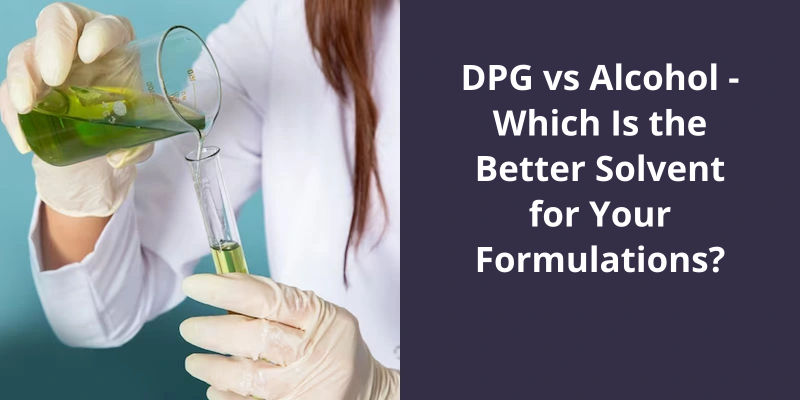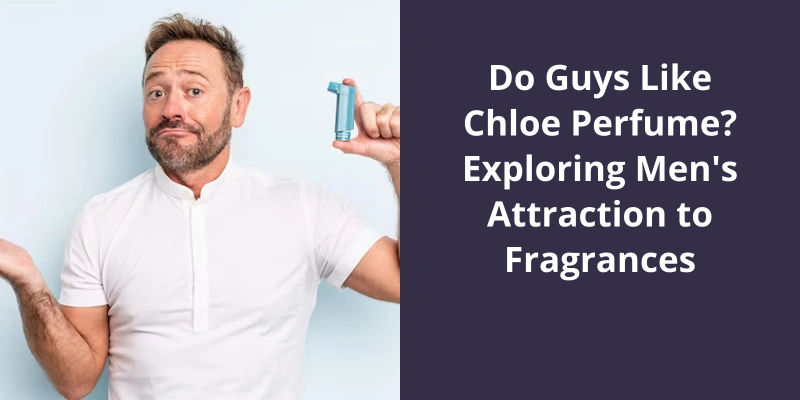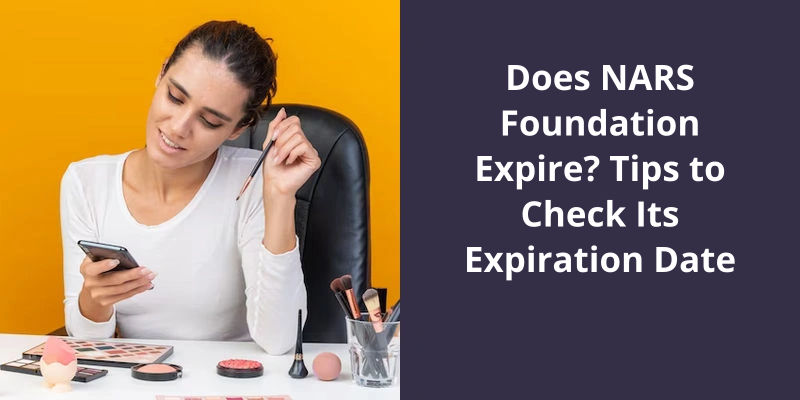DPG, or Dipropylene Glycol, and Alcohol are both solvents used in tinting formulations. DPG is water-soluble, hypoallergenic, and has a low odor, making it suitable for sensitive applications like cosmetics and skin and hair care products. Using DPG can result in a softer, longer-lasting scent because it’s a non-alcoholic solvent and doesn’t evaporate as quickly. Alcohol, commonly ethanol or isopropyl alcohol, on the other hand is a strong and quick-evaporating solvent. It’s often used in perfumes and colognes because it spreads scent quickly but can be drying and irritating to the skin. Clearly, DPG and Alcohol serve different purposes in formulations and the choice between them depends on the goals for the end product.

Is DPG Water Soluble?
DPG or dipropylene glycol is a common solvent in various industries due to it’s physical and chemical properties. This organic compound is a member of the glycol family, which means it contains two alcohol groups. One of these groups makes DPG water-soluble, while the other endows it with various chemical reactions that make it useful for many applications.
DPG is an essential ingredient in the production of automotive coolants, detergents, and personal care products. It’s also a solvent in the printing industry and a release agent in plastic molding. DPGs water solubility makes it an excellent carrier for various compounds that need to be dissolved in water for effective use. This property makes it a popular ingredient in cosmetic and personal care applications.
This allows manufacturers to create customized formulations that meet specific requirements.
It’s ability to dissolve in water allows it to be easily mixed with other ingredients, making it useful in creating custom formulations.
Properties of DPG That Make It a Good Alternative for Ethylene Glycol
DPG, or dipropylene glycol, is a chemical compound with several properties that make it a good alternative for ethylene glycol. DPG has a high boiling point, low toxicity, and low volatility, which makes it safer to handle and less harmful to the environment. Additionally, DPG has a low viscosity and high solubility, making it an effective solvent and enhancing it’s compatibility with other chemicals. This makes DPG a popular choice in applications where a non-toxic, high-performance alternative to ethylene glycol is needed, such as in antifreeze, cosmetics, and industrial processes.
In the world of incense making, having the right tools and ingredients is essential to creating the perfect scent. One such ingredient is DPG solvent, a liquid solvent that’s commonly used as a cutting agent to dilute fragrances and essential oils. This helps the fragrance to bind to the incense stick or cone, resulting in a slow and steady burn that releases a pleasant aroma. But what exactly is DPG solvent, and how is it used in incense making? Let’s take a closer look.
What Is DPG Solvent Used For?
DPG is also commonly used as a solvent in cosmetics, including lotions, shampoos, and body washes. It’s a versatile ingredient that helps to improve the texture and consistency of these products, while also serving as a carrier for active ingredients like vitamins and minerals. It can help to dissolve and disperse pigments and other ingredients, ensuring an even and consistent finish.
In the food and beverage industry, DPG is used as a solvent and carrier for flavors, particularly those that are oil-based. It’s often used in the production of processed foods, such as snack foods and baked goods, as well as in the manufacture of soft drinks and alcoholic beverages. As a food additive, DPG is considered safe for consumption in small quantities.
DPG has a low toxicity and is generally considered safe for use in these applications. However, as with any chemical substance, it’s important to handle DPG with care and follow proper safety protocols. This includes wearing protective gear, such as gloves and goggles, when handling the substance, and ensuring that it’s stored in a cool, dry place away from heat sources and direct sunlight.
It’s ability to dissolve and disperse other ingredients makes it an invaluable component in the production of many products we use every day.
Source: Dipropylene glycol – Wikipedia
Now that we understand some of the properties and uses of Dipropylene Glycol (DPG), it’s important to know whether it can be mixed with alcohol. While DPG is completely soluble in alcohol, it’s important to note that the effectiveness of DPG as a solvent and humectant may be reduced when mixed with high concentrations of alcohol. In the next part of this article, we’ll explore the potential benefits and drawbacks of diluting DPG in alcohol.
Does DPG Mix With Alcohol?
One question that arises among those interested in using DPG is whether it mixes well with alcohol. The answer is yes, DPG is completely soluble in alcohol, making it a great additive for alcohol-based products such as perfumes, hairsprays, and certain types of hand sanitizers. Those who prefer to dilute DPG in alcohol will find that it does so seamlessly, lending it’s solvency properties to the final product.
DPG is particularly useful in the cosmetic and fragrance industry due to it’s low toxicity and odorless nature. It’s solvent properties allow it to blend easily with other ingredients, making it an ideal choice for formulations where stability is important. Additionally, it’s ability to attract water makes it a popular humectant, helping to improve the hydration level of the skin or hair. These properties, combined with it’s fixative effects, make DPG a versatile ingredient in many personal care products.
It’s important to note that while DPG is generally considered safe for use in the concentrations commonly found in personal care products, it can cause irritation or allergic reactions in some individuals. As with any ingredient, it’s always a good idea to perform a patch test before using a product containing DPG to ensure that it’s well-tolerated. Additionally, those with particularly sensitive skin or who’re prone to allergies should consult a dermatologist before using any new personal care products.
It’s solvency and humectant properties make it an ideal choice for formulations where stability, good solubility, and hydration are important.
With the growing concerns surrounding the safety and environmental impact of DPG, industries are now exploring alternative substitutes. One of the substitutes gaining attention is 2-Methyl-1,3-propanediol (MPO), which shares similar properties with DPG while also boasting better biodegradability and lower toxicity. Another option is dipropylene glycol (DPG), which has already been used as a substitute for DPG in certain applications. Let’s take a closer look at these alternatives and their advantages.
What Is the Substitute for DPG?
However, in recent years, there’s been growing concern about the potential harmful effects of DPG, leading many manufacturers to seek alternatives. One promising substitute for DPG is 2-Methyl-1,3-propanediol (MPO).
MPO is a colorless, odorless, and low viscosity liquid that exhibits excellent solvency power, making it an ideal candidate for applications where DPG is traditionally used. Additionally, MPO offers several advantages over DPG, including improved thermal stability, lower toxicity, and lower environmental impact, making it a more sustainable option for manufacturers.
Another potential substitute for DPG is dipropylene glycol (DPG), a diol that shares many of the same properties and applications as DPG. Like DPG, DPG is a colorless, odorless, and low viscosity liquid that’s highly stable and has excellent solvency power.
However, unlike DPG, DPG is considered to be less toxic and more environmentally friendly, which has led many manufacturers to turn to this glycol as a substitute. Additionally, DPG is considered to be more cost-effective than DPG, making it a more attractive option for large-scale production.
As demand for sustainable and environmentally-friendly chemicals continues to grow, expect MPO and DPG to gain even more popularity as substitutes for DPG.
Possible Innovations in Glycols and Alternative Substances That Can Fully Replace DPG
- Development of glycols with higher boiling points to increase compatibility with other solvents.
- Exploration of renewable glycols derived from vegetable or waste sources.
- Research into low-toxicity and biodegradable alternatives to DPG, such as ethylene glycol phenyl ether (EGPE).
- Use of surfactants and co-solvents to enhance the performance of glycols and their alternatives.
- Investigation into the potential of ionic liquids as replacements for DPG and their compatibility with other solvents and formulations.
- Development of hybrid glycols that incorporate additional functional groups to enhance their properties and performance.
Conclusion
In conclusion, the comparison between DPG and alcohol can be challenging to make, as they serve different purposes and applications. While alcohol is a widely used solvent and recreational substance, DPG is primarily used as a humectant, solvent, and carrier in various industries. Although both substances have their advantages and disadvantages, it’s necessary to consider factors such as toxicity, flammability, and chemical properties before making a decision on their application. Ultimately, it’s up to individuals and industries to choose the most suitable substance for their specific needs, while always prioritizing safety and environmental awareness.




